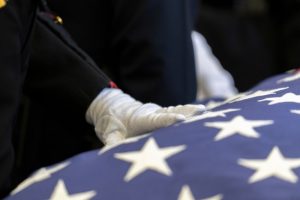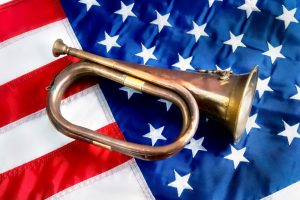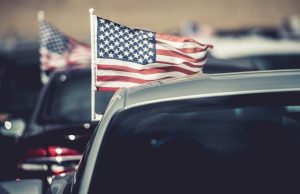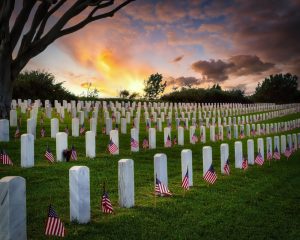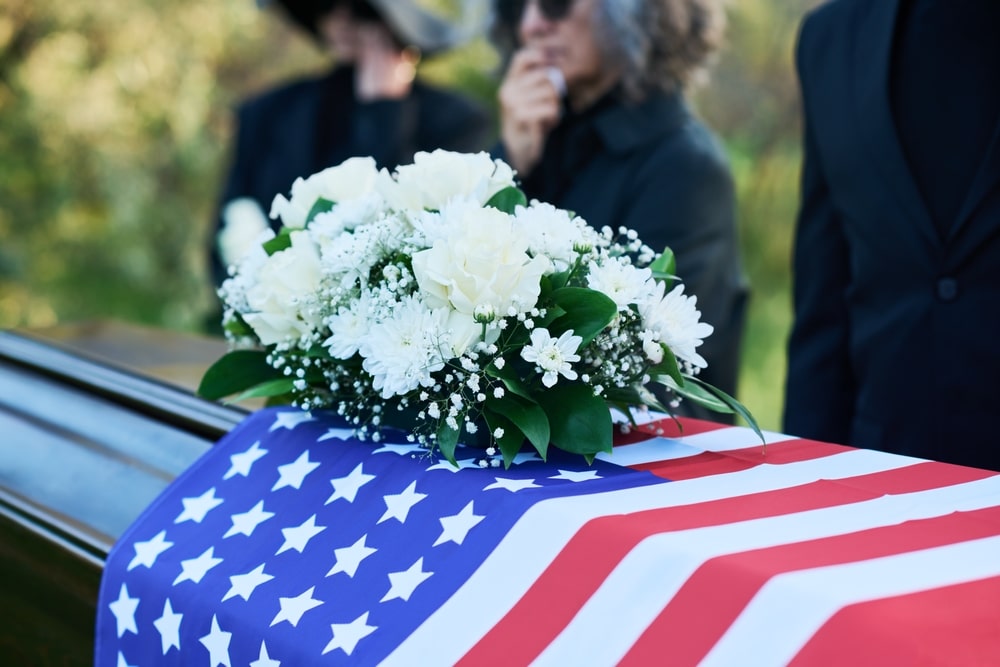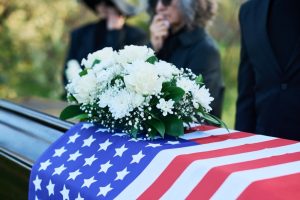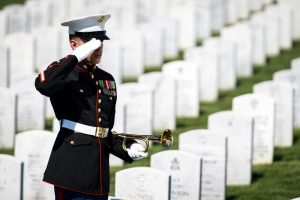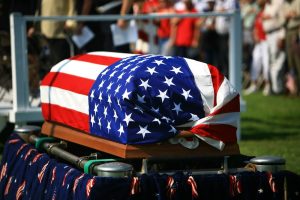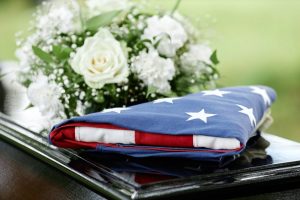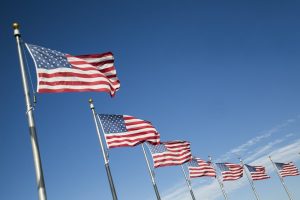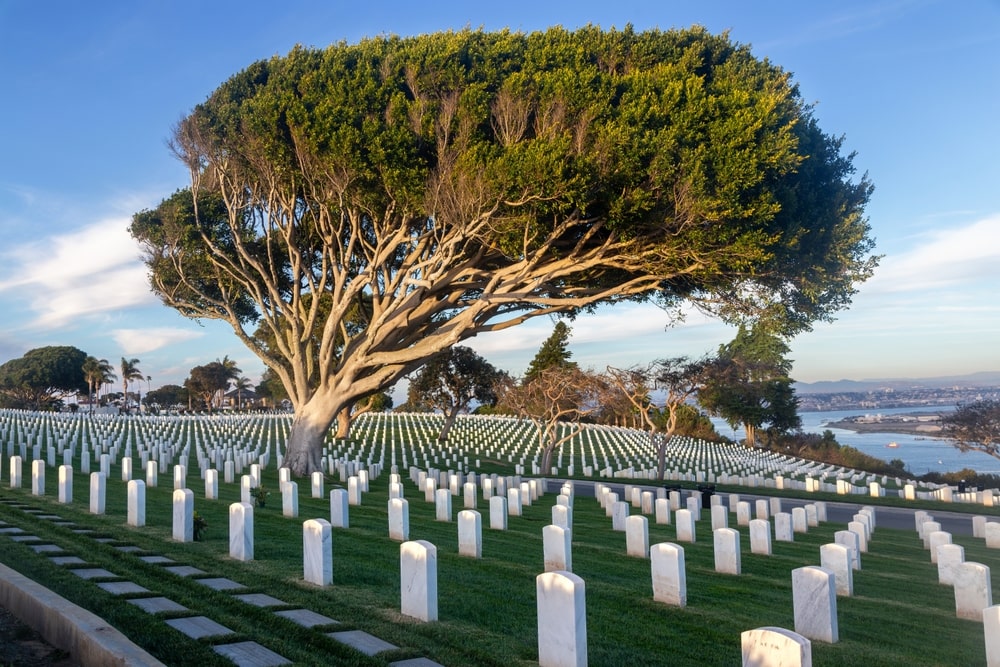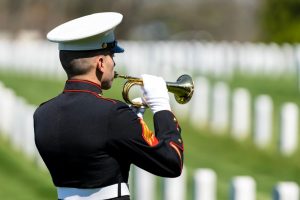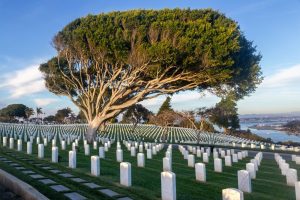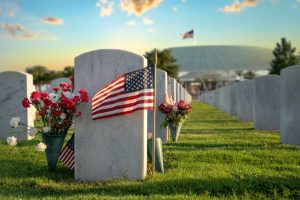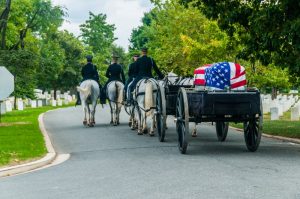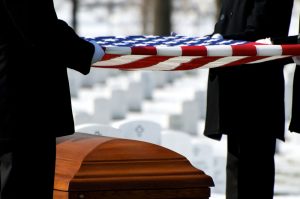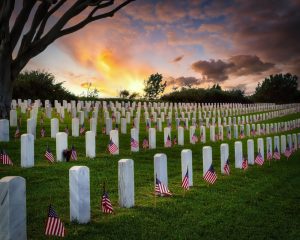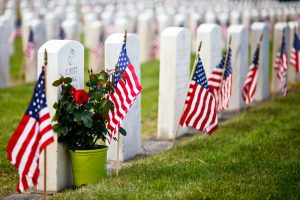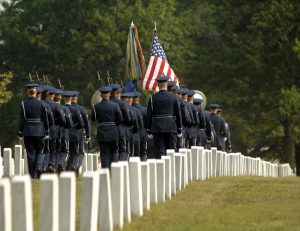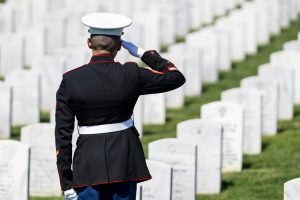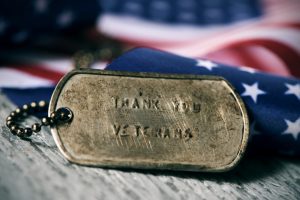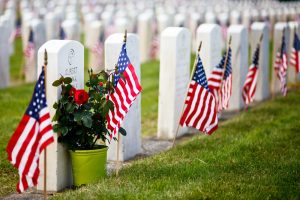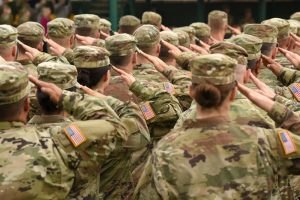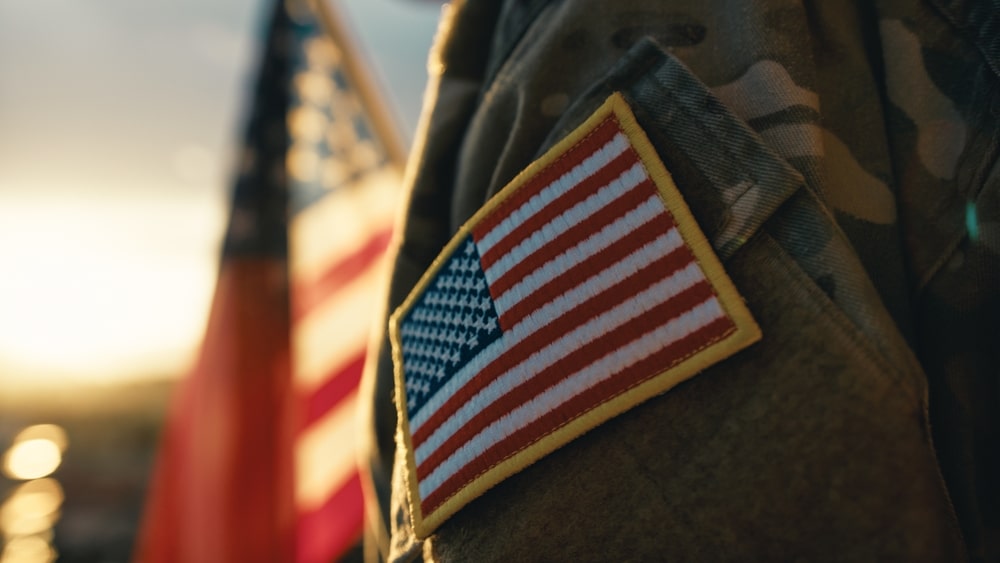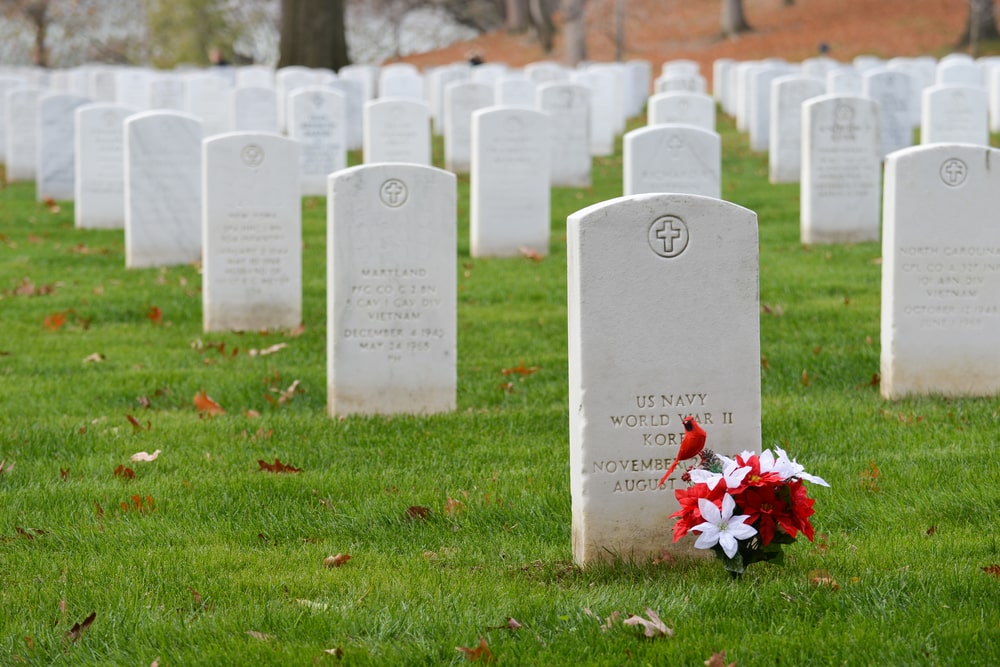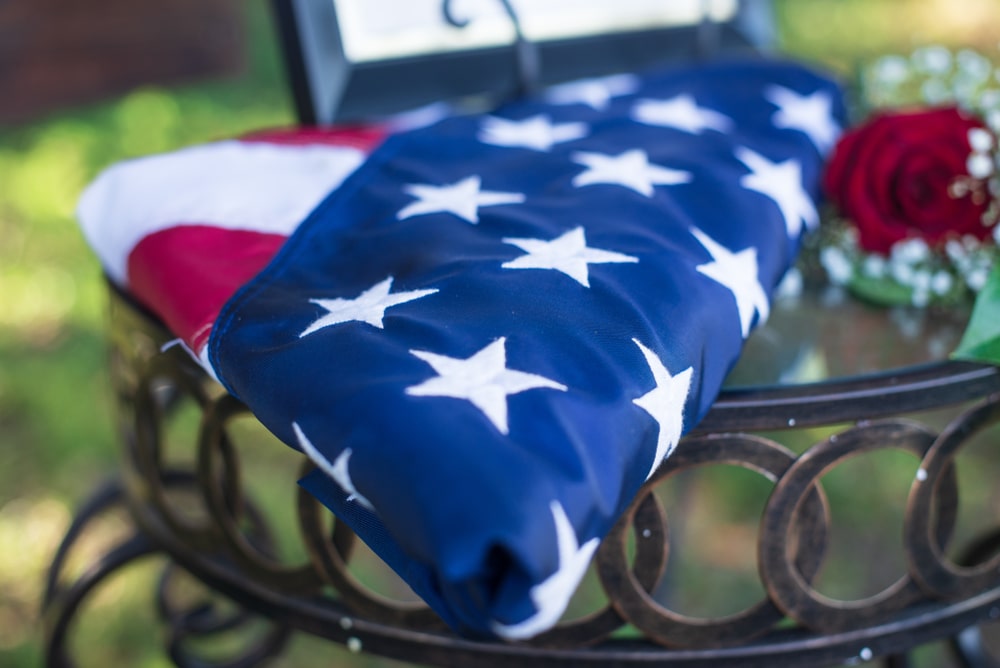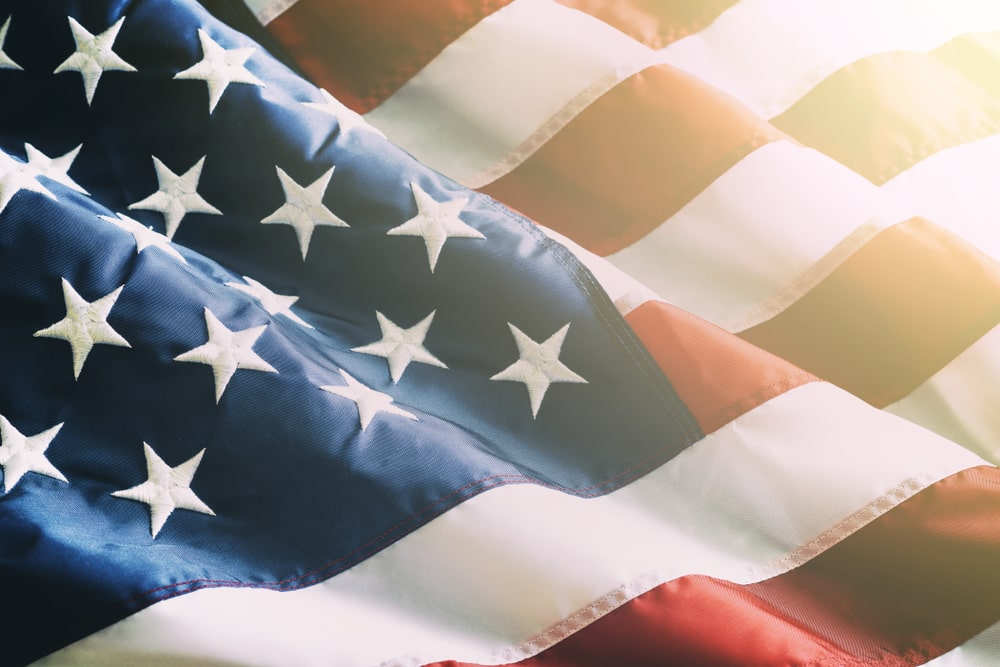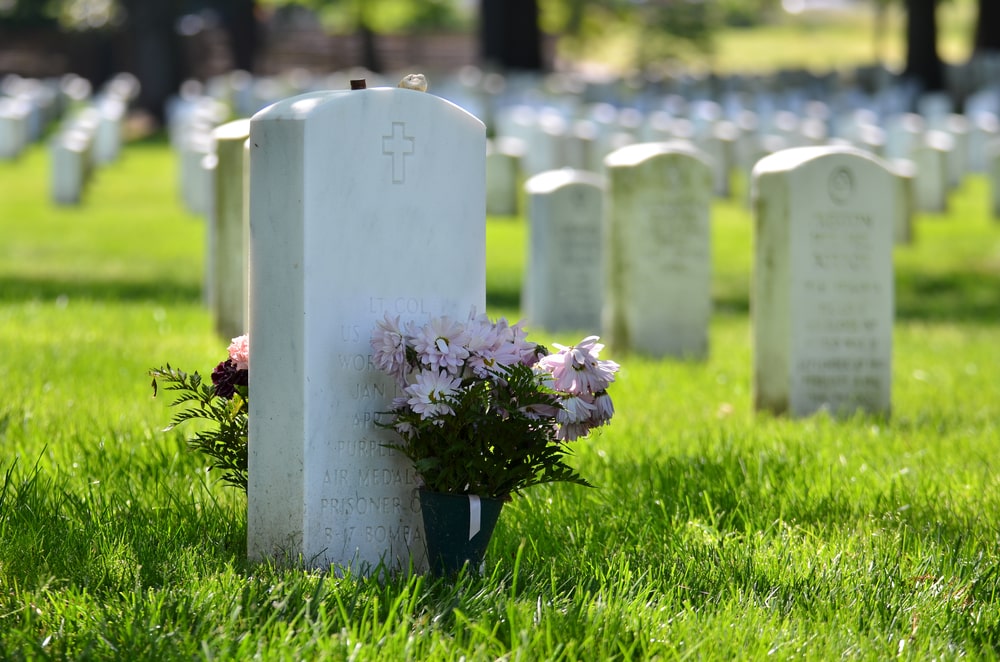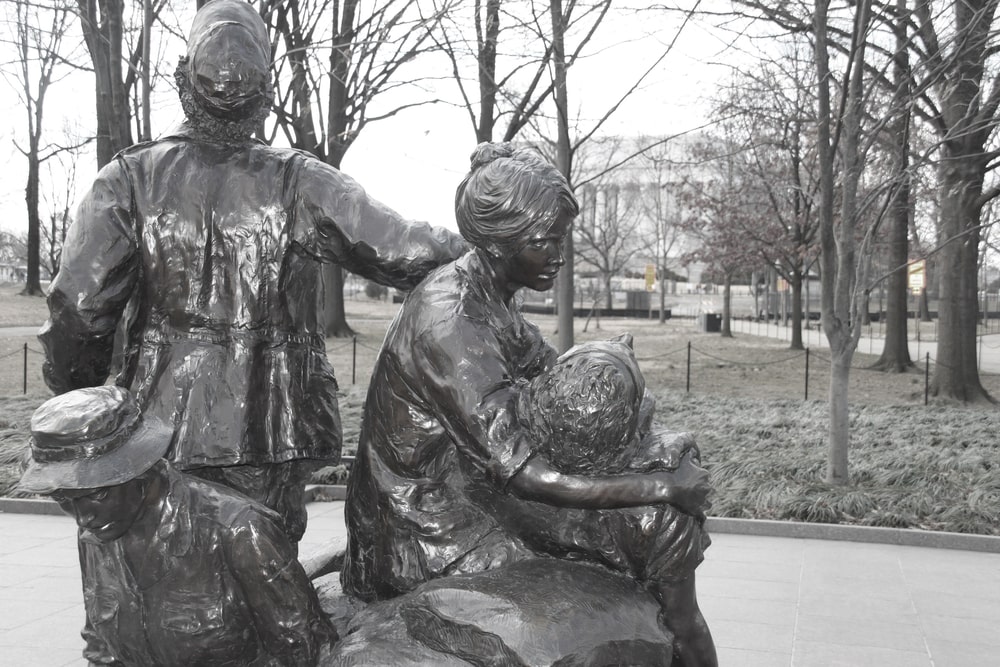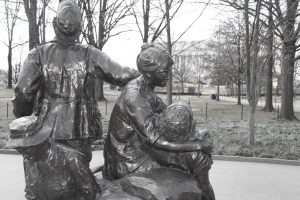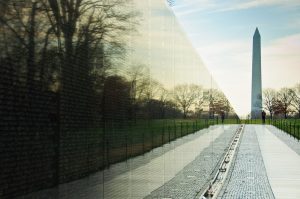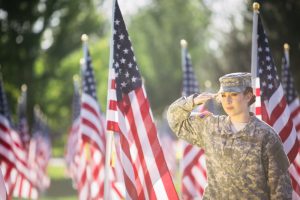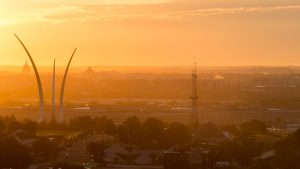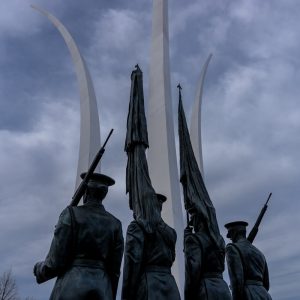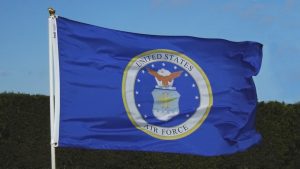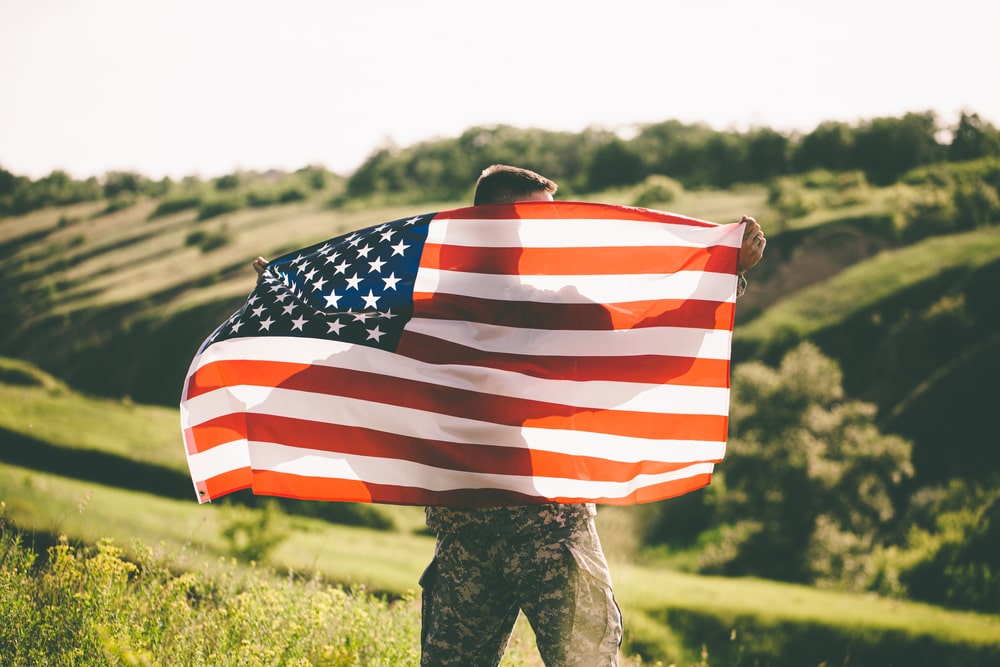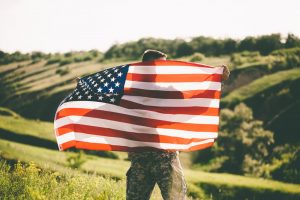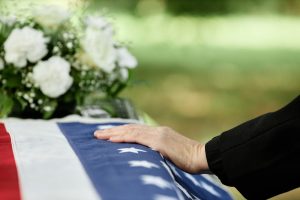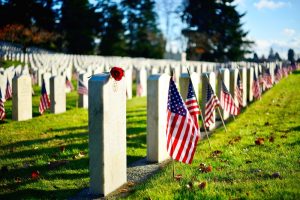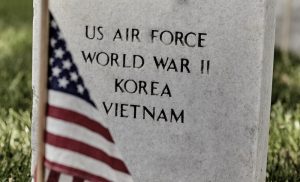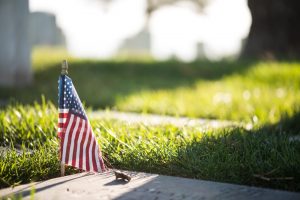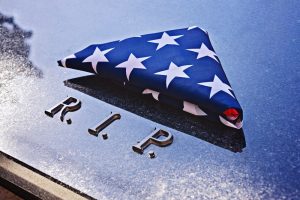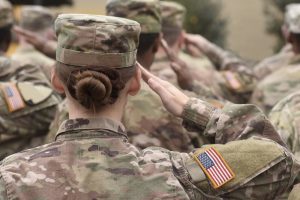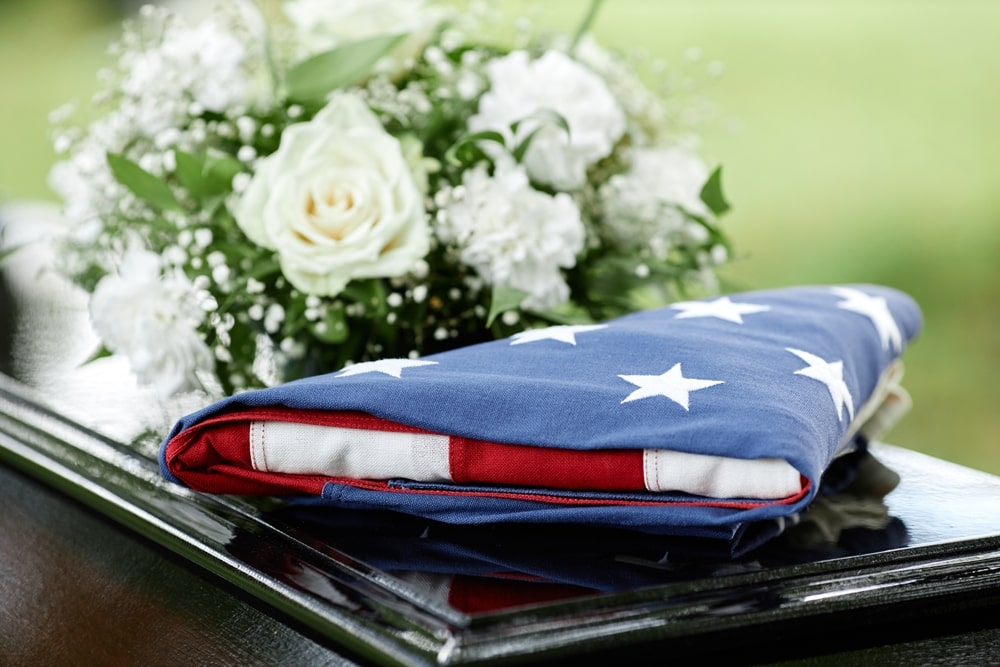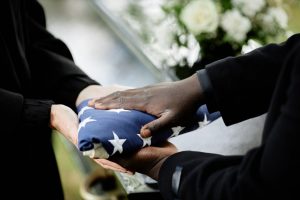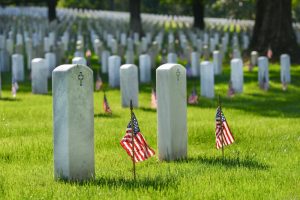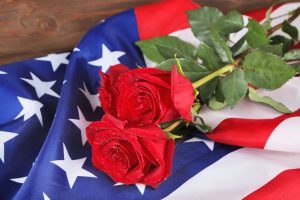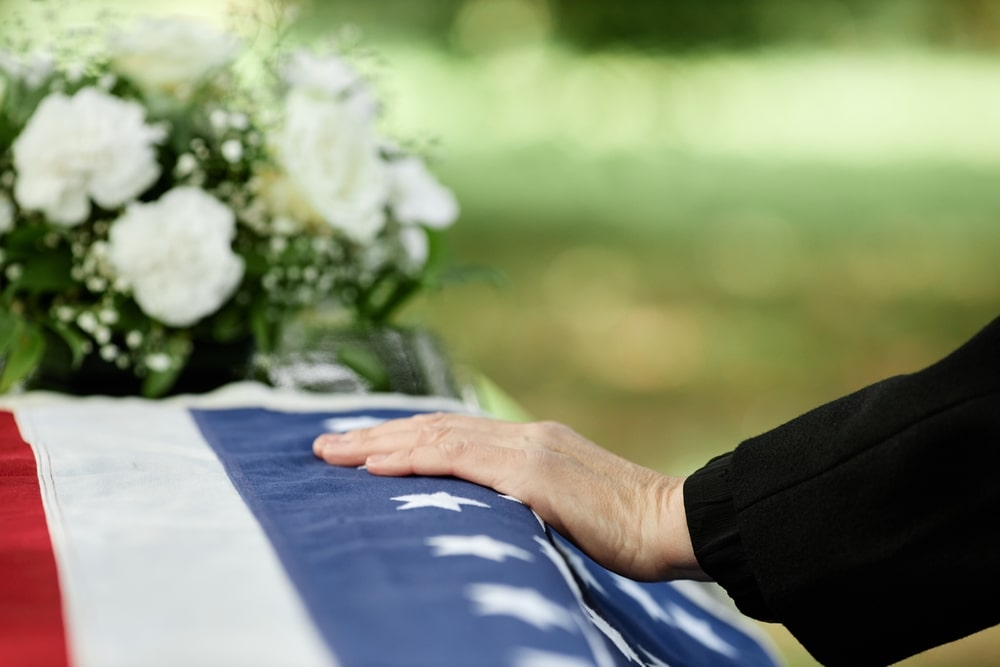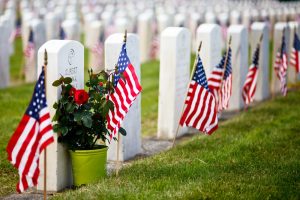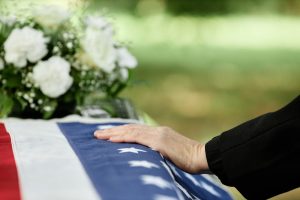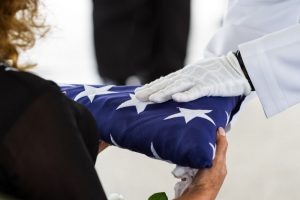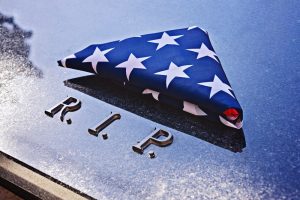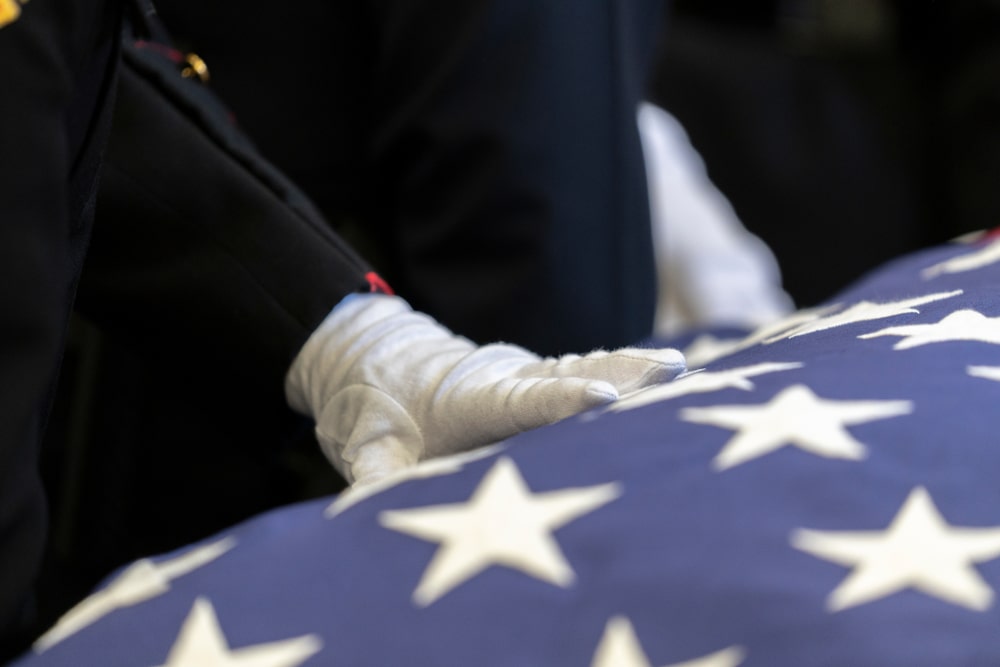
Honoring a veteran’s life and service goes beyond commemorating their time in the military; it’s about acknowledging their personal sacrifices, valor, and the unique stories that shaped their lives. From their active-duty service days to their veteran years and family memories, a veteran’s life is made up of many different facets. Today, let’s talk about 20 ideas for how you can personalize a beloved veteran’s funeral. These will help you honor and celebrate their military service in a way that is tailored to their one-of-a-kind story.
20 Ideas for Personalizing a Veteran’s Final Tribute
1. Request military honors
One of the most recognized options for honoring a veteran is military honors. This ceremonial option commonly includes the folding and presentation of the flag, playing Taps, and a salute from uniformed personnel. It may also include other elements, but the details can be worked out with a funeral director.
2. Invite guests to attend in uniform
If you expect any current or former service members to attend the final tribute, invite them to wear their uniform. This simple act will be a visual reminder to everyone that your loved one proudly served in the Armed Forces.
3. Choose a venue with significance
If you’d like, you can highlight a veteran’s service by choosing a venue with military significance. For example, have the service in an old USO building or contact the local VFW or American Legion Post to see if they can host. Or, if you choose burial at a national cemetery, you could ask for additional military honors, such as uniformed pallbearers.
4. Incorporate personal keepsakes & memorabilia
Every veteran will have special items and keepsakes associated with their time in military service. You could display awards, medals, challenge coins, patches, or ribbons in a shadow box. Create a uniform display on a table or use a dressmaker’s mannequin. Or you could put together a memory table where photos and keepsakes are shown.
5. Prepare a personalized event program
It’s common practice to create a personalized event program, where the songs, speakers, and other events are clearly outlined for attendees. For a veteran, you could use a patriotic color theme, include photos, and list their rank, awards, and deployments. For the design, you can also add insignia, logos, or the American flag or eagle.
6. Ask fellow veterans to speak during the eulogy
If your veteran was still in touch with old buddies or was involved at the local VFW or American Legion, you could ask fellow veteran friends to speak at the eulogy. With their own history in military service, they may add a unique perspective and highlight your loved one’s time in the miliary.
7. Create a video montage of the veteran’s life
While a video tribute should include every aspect of a person’s life, you can add specific details to commemorate their time in the service. Include photos of the person in uniform or volunteering with local veteran organizations. If available, you could also include video footage of graduations, promotion ceremonies, and other significant military milestones.
8. Decorate with patriotic colors or floral arrangements
Personalization has become the new norm, which means you can decorate the funeral venue with a theme, if you wish. For a veteran, you could use red, white, and blue as the signature colors during the service. Alternatively, you could invite guests to wear these colors or place patriotic floral arrangements in prominent places throughout the venue.
9. Select customized funeral merchandise
The funeral home will offer many types of merchandise, from caskets and urns to guestbooks and memorial jewelry. If you’d like, you can choose items that align with a military theme. For example, select a guestbook or an urn inscribed with the American flag or other military imagery.
10. Design a personalized monument
If you’ve decided to honor a veteran with burial or inurnment at a local cemetery, you can work with a local monument company to design a personalized grave marker. As part of the design, you could include a military medallion, a photo, or the insignia for the veteran’s service branch or unit.
11. Give guests a remembrance token or keepsake
At some funerals, guests are invited to take home a remembrance token or a keepsake. For a veteran, you could design a custom patch or challenge coin. Alternatively, you could create a bookmark with their photo in uniform or give away miniature American flags or pins. There are many options to choose from!
12. Add a timeline of the veteran’s life
Many military families move around, so it’s possible that a veteran has lived in many unique places. To highlight those cities and/or countries, you could add a timeline of the veteran’s life or display a map with pins added for each place they lived. Another option is creating collages or shadow boxes for each location with photos and mementos.
13. Encourage donations to support veteran organizations
For families who prefer not to receive flowers, you could instead encourage guests to give memorial donations to organizations that aid veterans and their families. You could look into local non-profits or direct people to national options, like Wreaths Across America or the Wounded Warrior Project.
14. Play ceremonial and patriotic music
In addition to national songs like “America the Beautiful” and the “Star-Spangled Banner,” every service branch has their own anthem, hymns, and related melodies. For example, the U.S. Navy is closely tied to the famous march “Anchors Aweigh” and the hymn “Eternal Father, Strong to Save.” With a quick online search, you can find the songs most beloved by your veteran’s service branch.
15. Sing patriotic songs together
Hearing many voices raised in song can be a powerful experience. To encourage participation and honor a veteran’s military service, you can invite guests to sing the “Star-Spangled Banner” together. Or you can select another patriotic song that may have special significance to the family or to the person who has died.
16. Arrange for a military band to perform
Another musical option is to arrange for a military band to perform during the service. You could request that they play ceremonial marches, Taps, Amazing Grace, a particular branch’s anthem, or you could leave it up to the band to choose. And if an official military band is not available, perhaps a local one would be willing to step in to perform.
17. Invite comrades-in-arms to participate
If the veteran was in touch with former comrades-in-arms, consider giving them time to share memories and express their respect. By including comrades’ stories, you not only highlight the veteran’s service, but you also create an incredibly moving moment and reinforce the power and camaraderie of bonds formed during service.
18. Read a history of the service branch
For those who are less familiar with the service branches, you could incorporate a short history of the veteran’s chosen branch. You could add the history to the printed program or include a reading on the subject. This practice could be a great way to help others appreciate the history and respect associated with the veteran’s service and dedication.
19. Include patriotic readings
Finally, you could include meaningful poems or quotes that will add an emotional and reflective element to the program. A few popular options to consider are:
- “Bivouac of the Dead” by Theodore O’Hara
- “The Ultimate Sacrifice” by Kelly Roper
- “A Nation’s Strength” by Ralph Waldo Emerson
- “Star-Spangled Banner” by Francis Scott Key
20. Customize the funeral procession
If escorting a veteran to their final resting place is planned, you could add a few unique elements to the funeral procession. Provide each car with a small American flag that will rest in a rolled-up window and wave during the drive. Add patriotic streamers to the funeral hearse or ask people to listen to a provided playlist on the drive to the cemetery.
As you can see, there are so many ways to personalize a veteran’s final tribute that pay homage to their commitment and dedication during their time of military service. And if you want to brainstorm other ideas, your funeral director can help!
Don’t Forget to Take Advantage of VA Veteran Burial Benefits
As you plan a beloved veteran’s final goodbye, don’t forget to request all the burial benefits they are eligible to receive. Depending on eligibility, the U.S. Department of Veterans Affairs may provide burial allowances, a government-issued headstone or grave marker, burial in a national cemetery, and more. Talk with a funeral director or visit www.va.gov/burials-memorials to look into the details. Additionally, you can browse the resources below for more information.

